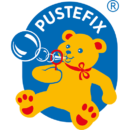- +49 7071 791006
- seifenblasen@pustefix.de
- Mo - Do: 8:00 - 16:30 · Fr 8:00 - 12:00
Small History of Soap Bubbles
Bubble-like structures such as water bubbles have been a familiar phenomenon since time immemorial, simply because they occur in nature. But their appearance is fleeting and not reconstructible.
This changed about 3000 years before Christ. For the first time the Sumerians produced a soap, from plant ash, goat tallow and water. The play of colors with the soap bubbles emerged around that time and must have caused delight in children and adults of that early high culture. These bubbles lasted longer, were beautiful and extremely entertaining.
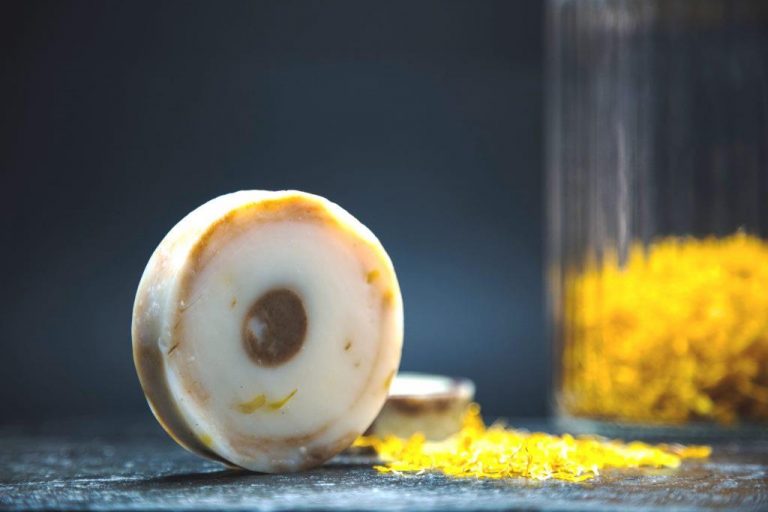
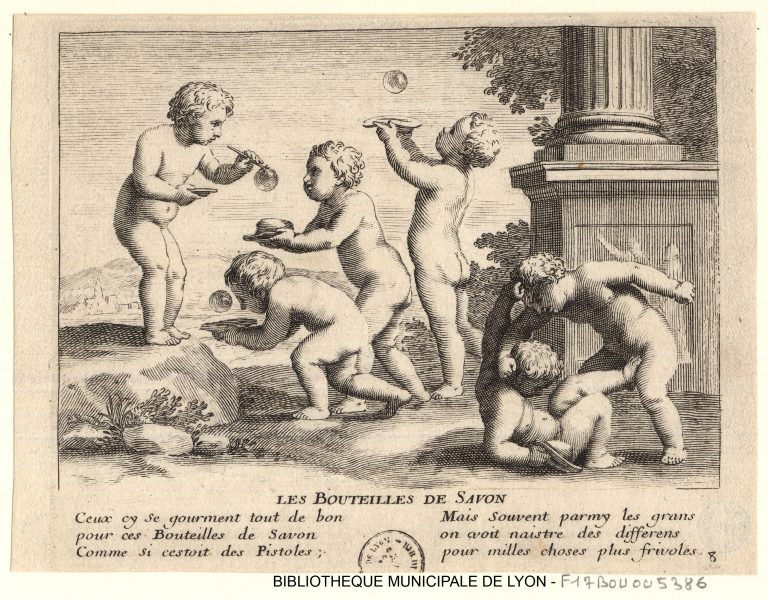
With the spread of soap, its export to other areas, the bubbles slowly took over the world.
The exact time at which humans mixed soap liquid specifically for playing purposes and filled it into small bowls in order to then produce soap bubbles with blowtubes cannot be dated exactly. But the phenomenon can be traced back a long way by means of descriptions in literature, game books and collections, and above all by means of pictorial material.
Soap bubbles shape the world
Reliable image sources from the late Middle Ages prove that soap bubbles were used by children for playing. In religious and secular paintings, in graphics and in portraits of families and children, numerous depictions of the soap bubble game can be seen. From this time on, one can find evidence from the most diverse areas of culture throughout all centuries:
- in religious iconography
- in morals and textbooks
- on book covers
- in ornaments
- on postcards
- in the fine arts
- on picture sheets
- in physics books
- in cartoons
- in the circus
- in idioms
- in songs
- in medical rehabilitation
- in the carnival tradition
- in advertising
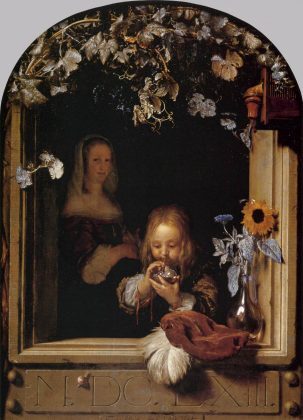
A boy at the window with rainbow bubbles, 1663
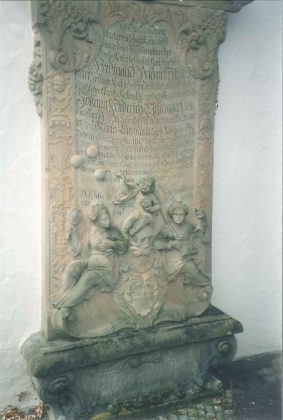
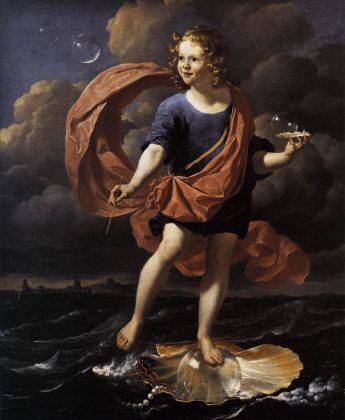
Allegorie, 1663
Scientists have been dealing with soap bubbles and their natural laws for centuries. The universal scholar Leonardo da Vinci (1452 – 1519) thought about the surface tension of liquids. Soap bubbles provided him with important insights. The natural scientist Isaac Newton (1643 – 1727), on the other hand, investigated their dazzling colors.


Even in the 20th century, the soap bubble influenced research. The roof of the Munich Olympic Stadium, for example, was built on the model of soap skins.
Because these always find the most stable, smallest surface, following laws, which were applied with the planning of the roof.
The meaning of the soap bubble
The soap bubble has always had a special meaning. In addition to the contemplation of color, aesthetics, fascination and the physical phenomenon itself, the soap bubble was seen primarily as a symbol of transience (vanitas symbol).
The analogy of the bursting soap bubble was used to describe the transience of human life, worldly goods, love, power, beauty, wealth and promises. On some pictures even the Grim Reaper is equipped with soap bubbles instead of scythe.
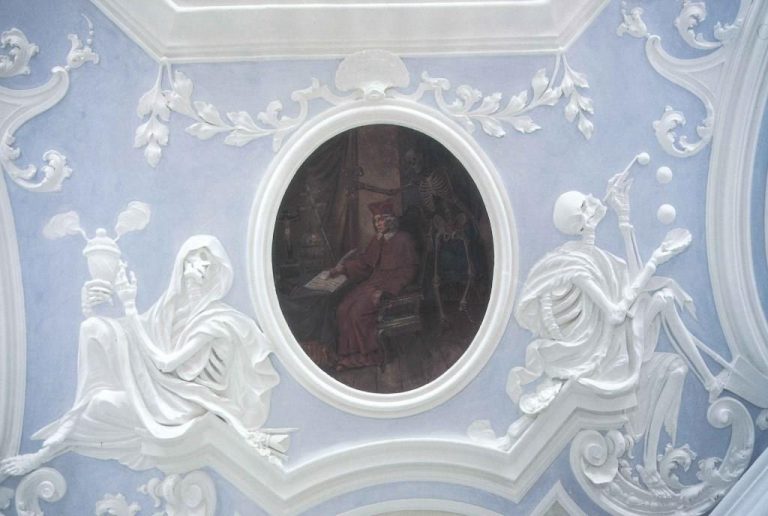
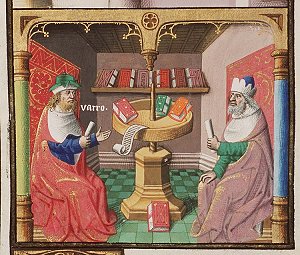
Marcus Terentius Varro (left)
In addition, the soap bubble always stood for something that was attractive, but at the same time lacking in content. The Roman scholar Marcus Terentius Varro made the disillusioned judgement “Homo bulla” in the century before Christ, “People are soap bubbles.”
Current speeches and synonyms revert to this meaning, e.g. when a dream “bursts like a soap bubble” or when there is talk of the “bubble economy” or the “real estate bubble”.
Soap bubbles as toys
So-called effect games such as the soap bubble game with a wide range of action and emotion are interesting for all ages. While toddlers enjoy pure perception, older children focus on the aspect of doing it themselves, their own activity and dexterity. The fun extends to the challenging competition in the form of a demonstration with an audience and the illustration of basic scientific principles, such as gravity or surface tension. The soap bubble game thus challenges and promotes a wide variety of human abilities:
- sensorimotor abilities = dexterity and perception
- cognitive experience = basic laws of physics
- social behaviour = interaction (watching, catching, competition among several children)
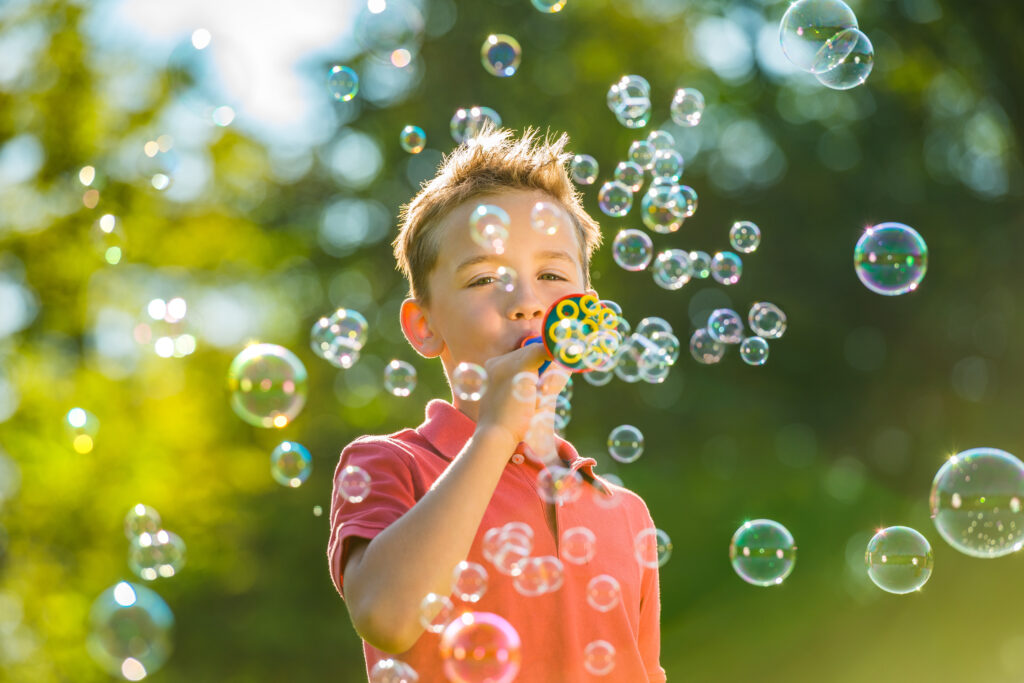
That’s why adults and children have been playing with soap bubbles for centuries. But it was only a few decades ago that they established themselves as “real” children’s toys, so to speak.
It all began with a chemist from Tübingen who was actually looking for the right formula for a detergent…
